Timeless doesn’t mean boring! It means brilliantly built to last.
In a design world obsessed with “what’s next,” chasing trends might seem like a savvy way to stay fresh. But in commercial interiors such as hotels, offices, restaurants, and retail for example, trend-chasing can be a costly trap. A space that looks beautiful today but wears out its welcome in a year or two isn’t just bad for aesthetics; it’s brutal on budgets and brand consistency.
Instead, the real power ? Designing interiors that mature gracefully… growing better with time, enduring style, adaptive function, and materials that get more beautiful as the years pass.
Here’s how to create interiors that won't just survive a decade but thrive through it.
At the heart of every enduring space lies a quiet confidence. Not loud, not desperate to impress, but balanced and thoughtful, impeccably constructed.
These are the core design philosophies that lay the groundwork for longevity:
Simplicity and proportion
Timeless design starts with clarity. Clean lines, balanced forms, and classic architectural details strip away the noise, allowing a space to breathe. They transcend stylistic eras, not just surviving the passing of time but owning it.
Neutral, flexible palettes
Subdued whites, warm greys, earthy taupes. These tones aren’t boring instead they’re liberating. They form a quiet backdrop that accommodates evolving tastes in furniture, art, and décor without demanding a costly overhaul every time a trend shifts.
Quality over quantity
Less, but better. That solid wood credenza. Those full-grain leather chairs. Hand-blown glass lighting. These are the pieces that don’t just survive but they gain soul. True craftsmanship doesn’t fade!
Functional, flexible layouts
Design for life and not for a static photo. Prioritize circulation. Modular furnishings, movable partitions, and generous hidden storage allow a space to evolve without jackhammering the foundation. Bonus: flexible layouts future-proof commercial spaces against operational changes.
Authentic natural materials
Nothing beats the quiet dignity of real wood, stone, linen, or wool. These materials tell a story as they age, each nick or softness a chapter of use. They’re honest. They’re human. They’re what timeless feels like.
Trend resistance (but not trend ignorance)
Yes, be aware of what’s “in.” But let trends live in changeable layers: pillows, paint, art, accessories. The bones… floors, walls, millwork… should whisper, not shout. For example a white oak floors with velvet cushions that can go from ochre to emerald on a whim.
Not all materials are created equal. Some buckle under pressure; others rise and radiate with age. Here are the ones that earn their keep:
Natural stone: Marble, limestone, granite, terrazzo. Nearly indestructible and aging only makes them more charismatic.
Hardwoods: Oak, walnut, teak. They deepen in tone, can be refinished, and only become more distinguished.
Leather: Full-grain leather softens, darkens, and gains character. A well-made leather armchair is less a purchase and more an heirloom.
Metals: Stainless steel keeps its crisp polish. Copper and bronze age into noble patinas. Corten steel rusts, seals, and stays strong.
Natural textiles: Wool, linen, silk, heavy cotton. They outperform synthetics in both looks and longevity.
Cork: Water-resistant, insulating, low-maintenance. especially well-suited to moderate climates.
Bamboo: Fast-renewing, strong, and excellent in humid zones.
Design with the Climate, Not Against It
Durability isn’t one-size-fits-all. A timeless interior in Miami should look and function differently than one in Stockholm. Here’s how to respond to the climate without compromising style:
Tropical / Humid Zones
Go for rot- and insect-resistant woods like teak or ipe.
Bamboo floors and wall panels offer moisture resilience with natural beauty.
Linen and cotton keep things breathable; design for airflow and cross-ventilation.
Arid / Desert Climates
High thermal-mass materials like adobe, rammed earth, and thick clay plaster absorb and release heat, stabilizing interiors.
Use ceramic tiles or polished concrete (cool underfoot and built to last.)
Temperate / Mediterranean Regions
Cork excels here for walls and floors ensuring insulating, breathability, and moisture-resistance.
Combine lime plaster with local stone and wool textiles for a tactile, cozy feel.
Cold / Subarctic Zones
Softwoods like spruce and fir, when well-treated, retain heat and charm.
Insulate with wool, double-glaze the windows, and layer in thick textiles and rugs for comfort and function.
Use brick or stone where possible (they store and slowly release heat beautifully.)
The Balance: Permanent Yet Adaptable
A truly enduring interior is one that can evolve. Here’s how to anchor longevity while allowing room to grow:
Build around durable core elements: Invest in quality millwork, stone flooring, architectural columns, and plumbing fixtures. These should be beautiful, sturdy, and timeless enough to avoid frequent updates.
Keep changeable layers nimble: Movable shelving, reconfigurable seating, and seasonally swappable textiles allow for updates without tearing up the floor.
Future-proof your infrastructure: Hidden conduits, raised floors, and access panels make tech upgrades easier, no need to gut a wall to add a port.
Maintain like you mean it: Oiling wood, resealing stone, and gentle leather care ensure your materials age with grace, not neglect.
Here are some examples of Timeless interiors:
Villa Mairea by Alvar Aalto
A masterful example of architectural transition, blending traditional Finnish influences with the principles of modernism. Aalto choreographs a sensory journey through materiality, beginning with stone at the entrance, shifting to tile, then timber, and finally soft rugs, as one moves deeper into the home. This progression creates an increasingly intimate atmosphere. Inside, slender wooden columns evoke the vertical rhythm of the surrounding birch forest, blurring the line between interior and landscape. Aalto’s design is not only timeless but deeply rooted in nature and culture, offering a warm, human-centered take on modern architecture.
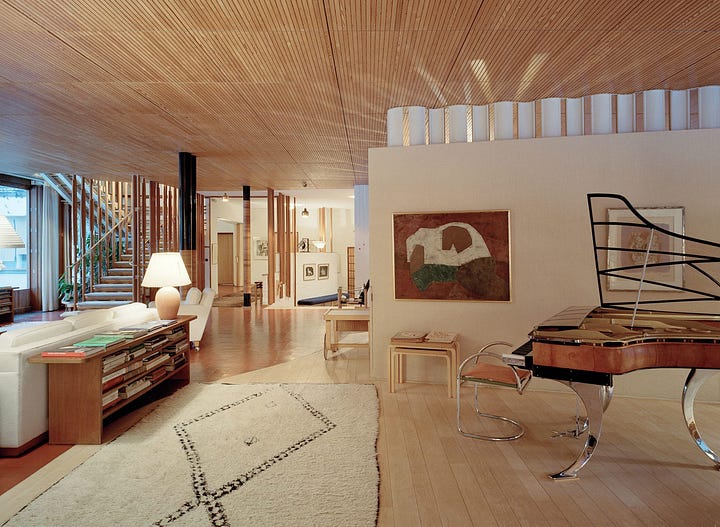
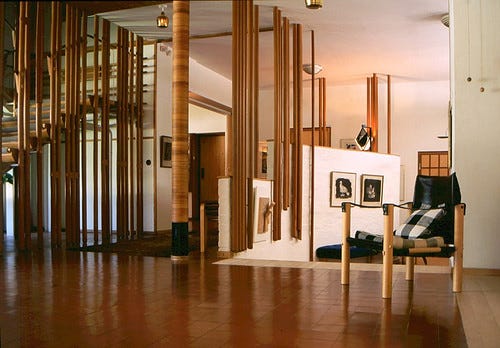
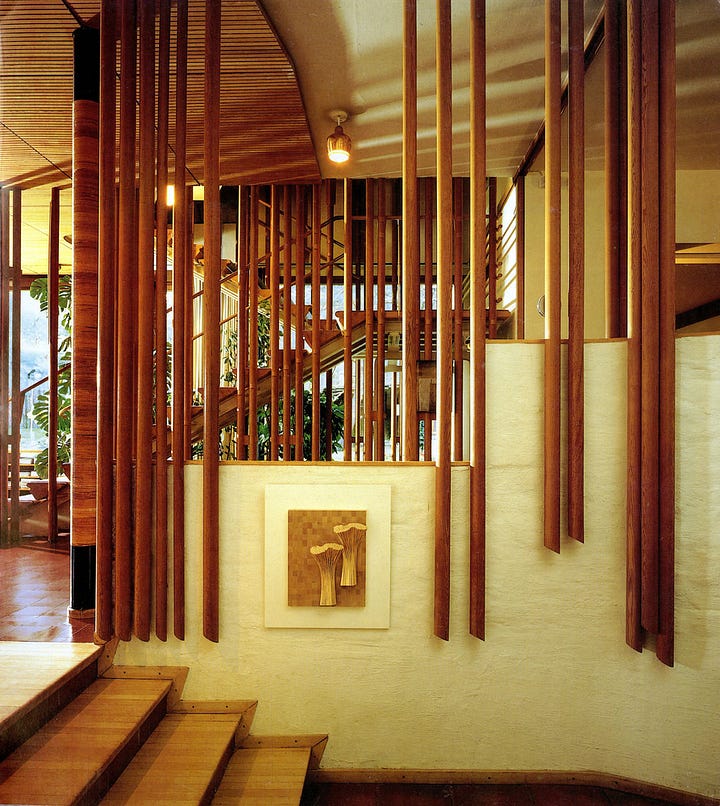
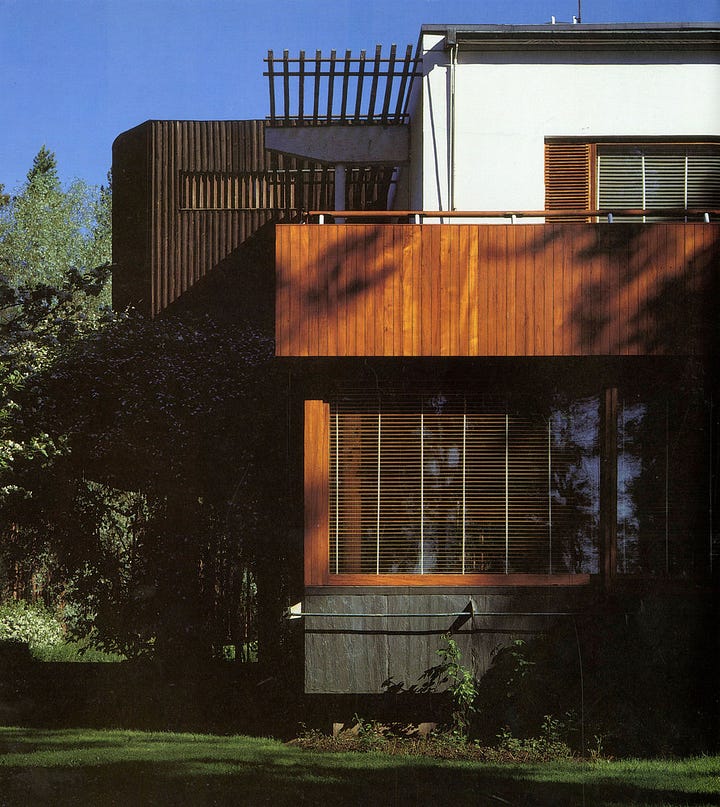
The Glass House by Lina Bo Bardi
A modernist landmark in Brazil, celebrated for its delicate balance of transparency and privacy. Built on a sloping site, the house is composed of two contrasting volumes. A glass-enclosed pavilion hosts the living and dining areas, floating above the ground and framing views of the lush forest while embracing an open, social atmosphere. The second, more opaque volume, houses private rooms on the upper floor, offering seclusion and quiet. Bo Bardi’s design merges architecture and environment with poetic clarity, showcasing how modernist ideals can be adapted to local terrain, climate, and culture.

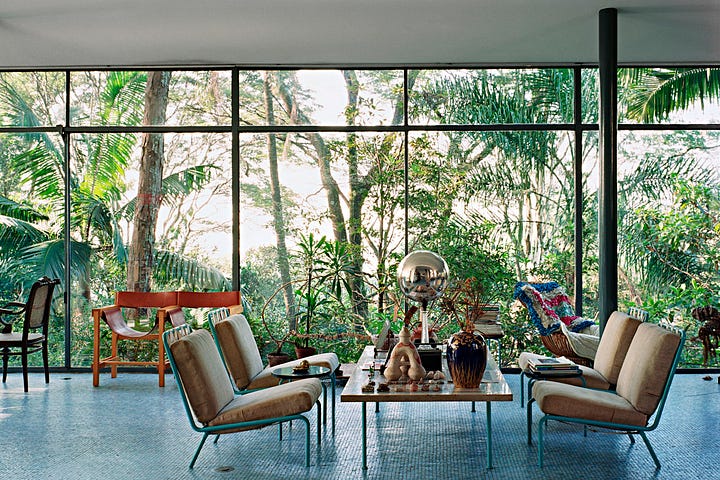
Timeless design doesn’t mean looking back, it means building forward, intelligently. It’s a marriage of form and function, of respecting history while preparing for tomorrow. These interiors age not by fading, but by deepening…. like leather, like stone, like stories well told.
So next time you face a design brief, ask yourself: will this space still speak in ten years? Or will it be shouting for a renovation?
Choose the former. Build for beauty that lasts.




Beautifully outlined and inspiring, whether you’re an old hand or just learning. Thank you.